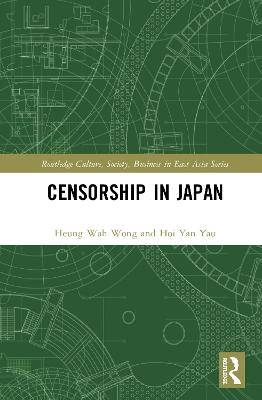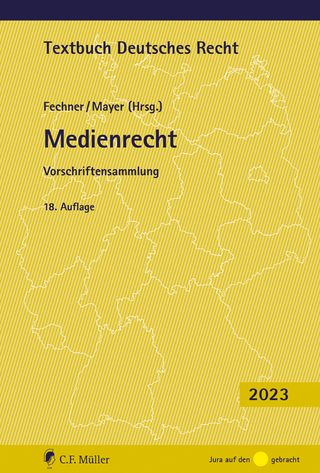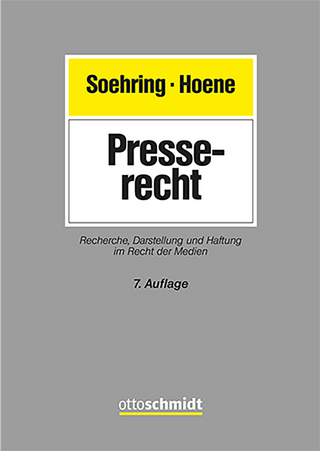
Censorship in Japan
Routledge (Verlag)
978-1-138-22200-7 (ISBN)
This book explores censorship, particularly film and video censorship, in Japan in modern times. It shows how most censorship has been the film and video industry exercising self-censorship and how this system has been problematic in that it has allowed dominant players in the industry to impose their own standards and exclude independent filmmakers. It outlines notable obscenity cases and discusses how industry self-censorship bodies have been undermined both by industry outsiders setting up their own alternative regimes and by the industry self-censorship bodies themselves being prosecuted for obscenity. The book also examines the conflict between the obscenity law, introduced in Meiji times when Japan was importing Western models, and the freedom of speech law, which was put in place by the US occupation administration after World War II. The book concludes by assessing the current state of censorship in Japan and likely future developments.
Hoi-yan Yau is Senior Lecturer in the Department of Cultural Studies at Lingnan University, Hong Kong. Heung-wah Wong is Associate Professor and Acting Head of the School of Modern Languages and Cultures at The University of Hong Kong.
List of Figures and Tables Acknowledgements Glossary 1 Introduction Major Analytical Themes Conceptual Schemes Organization of the Book Methodological Difficulties Organization of Chapters 2 A Brief History of Censorship in Japan Introduction Early censorship in Imperial Japan Meiji Period Taishō and Shōwa Periods Post-war Japan From State Censorship to Self-regulatory or industrial Inspection Conclusion 3 What Is Japanese Adult Video? Introduction A Brief History of Japanese Adult Videos Tantai and Kikaku AVs Kikaku AVs The Saviour Ideology Conclusion 4 Society of Japanese Adult Video Industry: AV studios, regulators and distributors Introduction The Organization of AV Makers Wholesalers and Rental Shops Biderin as a the Most Dominant Self-regulatory Body in the AV industry Conclusion 5 How Biderin Regime Was Founded? Biderin was the self-regulatory body in the AV industry in the 1980s and 1990s Introduction Biderin was a Self-regulatory Body The Organization of Biderin The Relationship between Biderin and the State (Police) Control of Wholesalers and Rental Shops Biderin and AV Makers Inspection Process Conclusion 6 Medirin: the Emergence of a New Regime in the AV Industry The Concept of Social Drama The Breaching Stage The Crisis Stage: Medirin Getting Recognition Conclusion 7 From Biderin Via Medirin to Eizōrin: The collapse of Biderin and the Return of Order Introduction Redressive Stage: Biderin Incident The New ‘Censoring’ body: Eizōrin Reintegration The Search for a New Order Conclusion 8 Adult Video Inspection at Eizōrin Introduction Inspecting Adult Video at Eizōrin Conclusion 9 Changing Landscapes: The Emergence of a New Categorical Classification of Japanese AVs Introduction Medirin and AVs-for-Sale The Changing Adult Video Landscapes Conclusion 10 Conclusion Bibliography
| Erscheinungsdatum | 15.01.2021 |
|---|---|
| Reihe/Serie | Routledge Culture, Society, Business in East Asia Series |
| Zusatzinfo | 7 Tables, black and white; 5 Line drawings, black and white; 36 Halftones, black and white; 41 Illustrations, black and white |
| Verlagsort | London |
| Sprache | englisch |
| Maße | 156 x 234 mm |
| Gewicht | 453 g |
| Themenwelt | Recht / Steuern ► EU / Internationales Recht |
| Recht / Steuern ► Privatrecht / Bürgerliches Recht ► Medienrecht | |
| Sozialwissenschaften ► Kommunikation / Medien ► Medienwissenschaft | |
| Sozialwissenschaften ► Soziologie | |
| ISBN-10 | 1-138-22200-3 / 1138222003 |
| ISBN-13 | 978-1-138-22200-7 / 9781138222007 |
| Zustand | Neuware |
| Haben Sie eine Frage zum Produkt? |
aus dem Bereich


